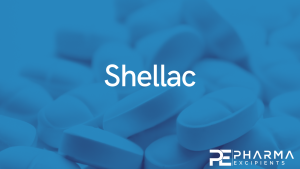Clinical Demonstrations of Controlled-Release Tablets Constructed by the Combined Usage of Shellac and Hydroxypropyl Methylcellulose

A new tablet system was examined for an intestinal delivery system using hydroxypropyl methylcellulose (HPMC) and shellac. HPMC was incorporated into the inside of the tablet, and shellac was coated on the surface, which was evaluated for its controlled-release property through several dissolution tests, firstly in vitro and then via two kinds of clinical studies with healthy volunteers.
The clinical studies were originally designed by employing X-ray photography for the movements of the tablets in the gastrointestinal tract and an electronical device to easily analyze the absorption profile of glucose, a model compound. It was found that the dissolution of the tablet was strongly suppressed in a simulated gastric fluid (pH 1.2) and subsequently started to disintegrate in a simulated intestinal fluid (pH 6.8). The first human study with X-ray photography revealed that the model tablets could pass through the stomach without disintegrating.
The controlled release of the tablets was further confirmed via analyses of the AUC, Cmax, and Tmax for the blood glucose concentration with other volunteers. The AUC and Cmax were significantly reduced by using our system, thus concluding that the delivery system combined with the addition of HPMC and a shellac coating unequivocally leads to controlled release in the human gastrointestinal tract.
Download the full article as a PDF here or read it here
Materials: Crystalline cellulose (VIVAPUR101), lactose (Lactose-100M), calcium stearate, and HPMC (SE-06 and NE4000) were purchased from JRS Pharma (Tokyo, Japan), Glanbia Ireland (Kilkenny, Ireland), EIKA Corporation (Tokushima, Japan), and Shin-Etsu Chemical (Tokyo, Japan), respectively. Maltitol (Amalty-MR50) and sorbitol (Sorbit) were commercially obtained from Mitsubishi Corporation Life Sciences (Tokyo, Japan). Sucrose fatty acid ester (S-570) was purchased from Mitsubishi Chemical Cooperation (Tokyo, Japan). Starch (Perfiller102) and 10% (w/w) shellac solution (AQ shellac) were purchased from FREUND CORPORATION (Tokyo, Japan). Agar (disintegration grade), silicon dioxide (Sylopage), and psyllium husk powder were bought from Ina Food Industry (Nagano, Japan), Fuji Silysia Chemical (Aichi Japan), and Shikibo Cooperation (Osaka, Japan), respectively. All the additives used were food grade. A red-coloring agent (Allura Red AC) was obtained from San-Ei Gen F.F.I., Inc (Osaka, Japan). Hydrogen chloride, sodium chloride, sodium hydroxide, and potassium dihydrogen phosphate were commercially obtained from KANTO CHEMICAL CO., INC (Tokyo, Japan).
Article information: Wakamatsu, J.; Sato, K.; Uryu, K.; Maru, I. Clinical Demonstrations of Controlled-Release Tablets Constructed by the Combined Usage of Shellac and Hydroxypropyl Methylcellulose. Future Pharmacol. 2021, 1, 48-59. https://doi.org/10.3390/futurepharmacol1010005
Read more on Shellac as a pharmaceutical excipient here:


